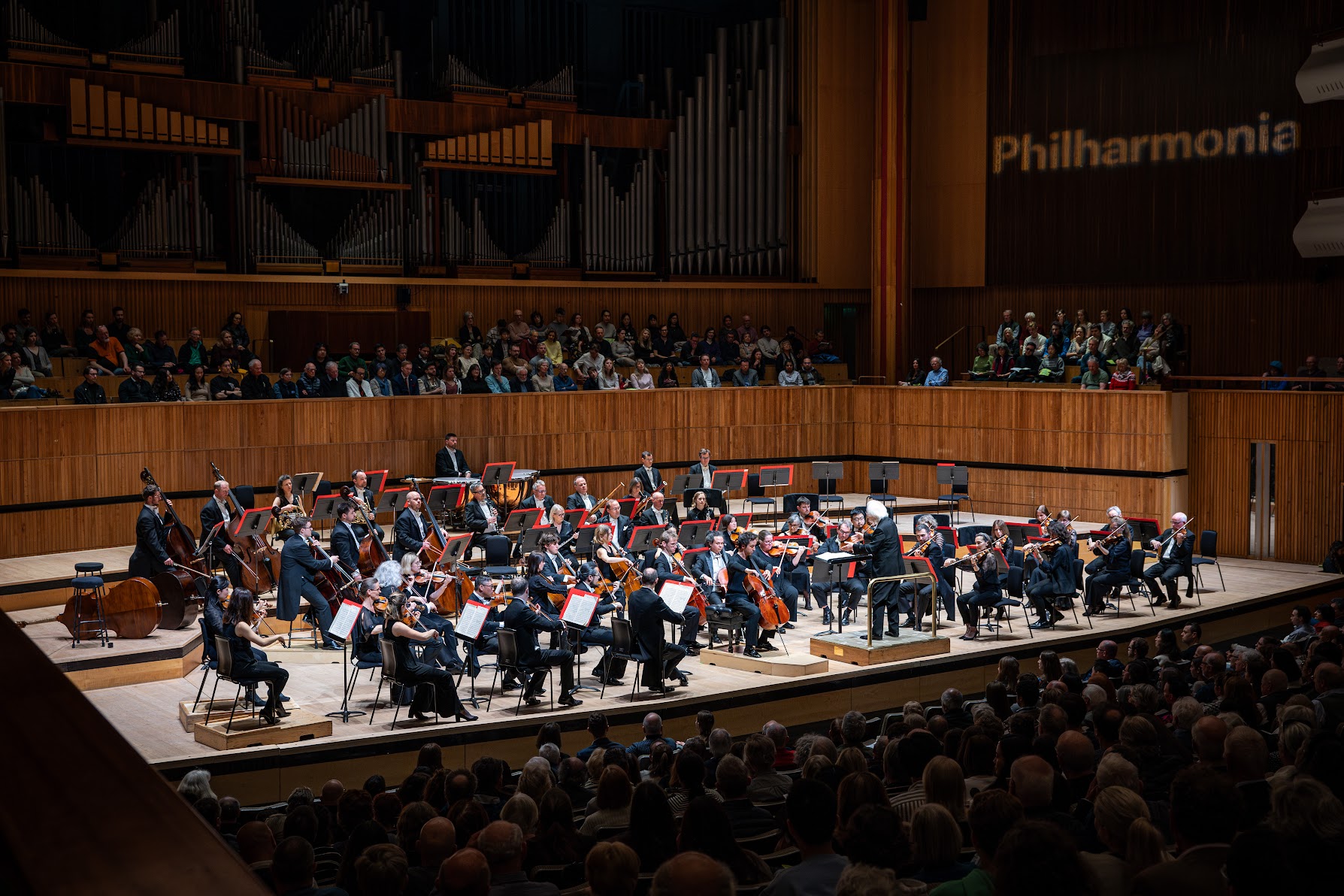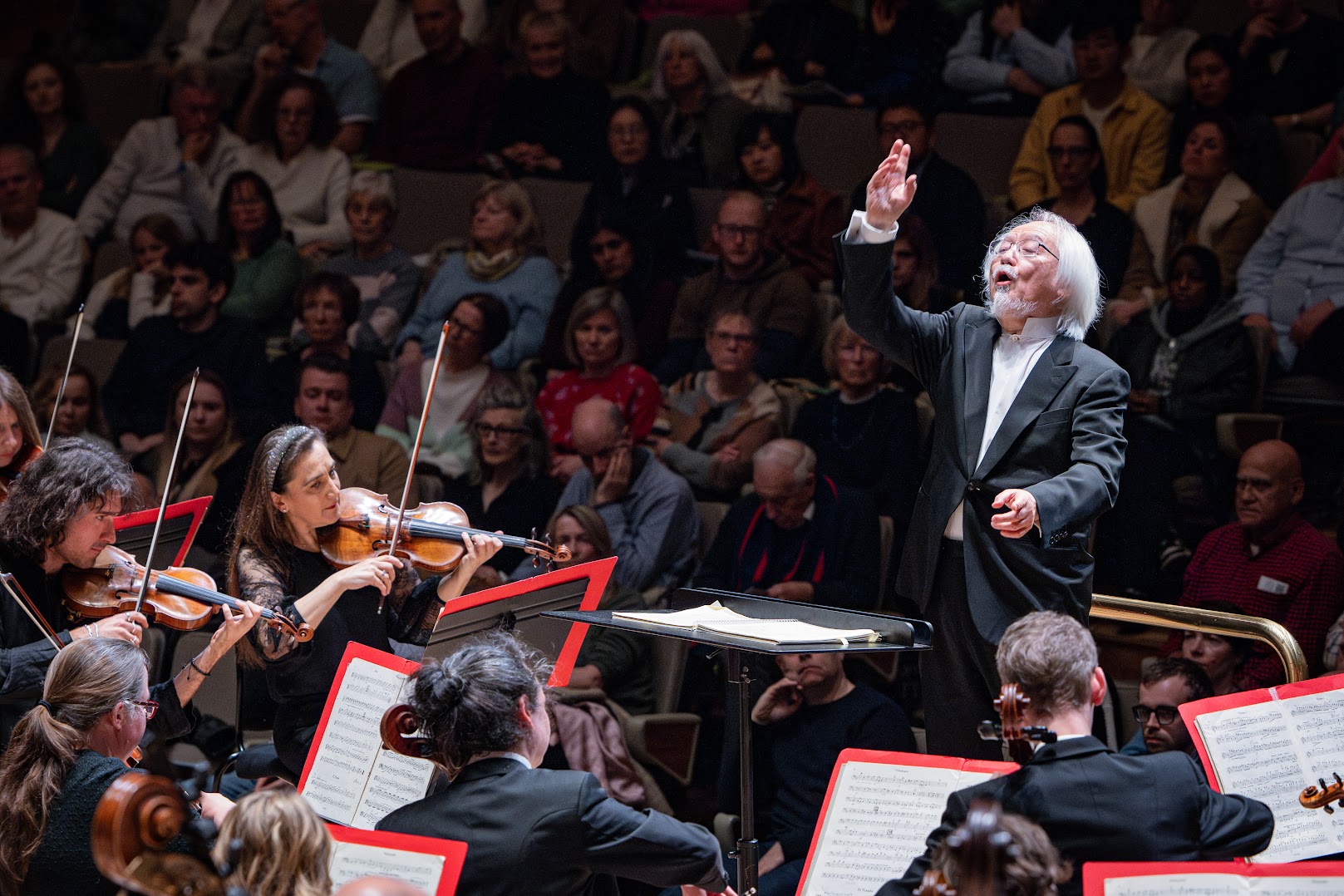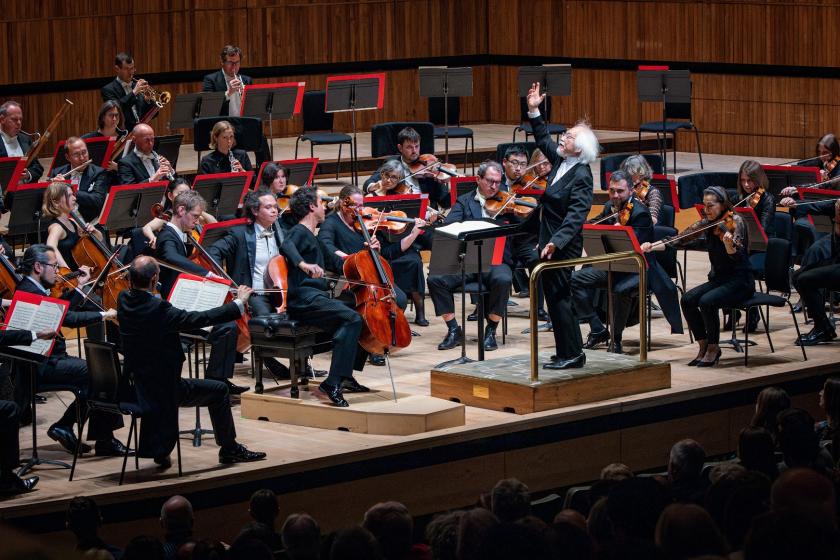As he approaches his 70th birthday, Masaaki Suzuki has not just travelled into pastures new but proved himself thoroughly at home in them. The founder-director (in 1990) of Bach Collegium Japan, a distinguished harpsichordist-organist as well as one of the most rigorous and scholarly interpreters of the Baroque legacy, has just completed a tour with the Philharmonia that joyfully embraced a selection of Romantic masterworks.
They returned from Spain to the Royal Festival Hall (pictured below) with a programme that saw Suzuki, stick-less and relaxed but fiercely attentive to every fine detail, lead the orchestra with genial elegance and precision through pieces by Beethoven, Schumann and Dvořák that, once, might have seemed far from his home turf. If we could hear a clear connection with his musical hinterland, it lay perhaps in the introspective tenderness of Jean-Guihen Queyras’s playing of the Schumann Cello Concerto – a technically impressive but warmly involving performance, capped by an exquisite encore from a Bach cello suite.  In the opener, Beethoven’s Egmont Overture, the bite and drive of the Philharmonia strings (cellos especially) created excitement without bombast. Suzuki favoured clear, comparatively light, textures, with well-judged pauses, dramatic entries and a canny sense of phrase and pace. He conveyed the mystery, anticipation and even dread of Beethoven’s episodic music for Goethe’s political tragedy, rather than aiming for strident gestures, and avoided dynamic extremes. Only gradually did the motoric momentum build. The horn-driven finale of the noble revolutionary’s execution, when it arrived, delivered a suitably heroic flourish; but even here a touch of polished restraint lingered.
In the opener, Beethoven’s Egmont Overture, the bite and drive of the Philharmonia strings (cellos especially) created excitement without bombast. Suzuki favoured clear, comparatively light, textures, with well-judged pauses, dramatic entries and a canny sense of phrase and pace. He conveyed the mystery, anticipation and even dread of Beethoven’s episodic music for Goethe’s political tragedy, rather than aiming for strident gestures, and avoided dynamic extremes. Only gradually did the motoric momentum build. The horn-driven finale of the noble revolutionary’s execution, when it arrived, delivered a suitably heroic flourish; but even here a touch of polished restraint lingered.
In the Schumann concerto, Queyras proved a charismatic guide on this idiosyncratic journey across a rainbow landscape of emotions. The work, with its movements that segue seamlessly from one to another, often feels like an accompanied solo rhapsody, and the Montreal-born French cellist found the perfect tone of golden, glowing melancholia to direct its soulful wanderings. Queyras’s superbly expressive legato lines nonetheless never dipped his bow in schmaltz, with some sumptuously rich tone colours – above all in the shadowy, twilit depths of his lower strings. Suzuki drew quietly impassioned responses from the Philharmonia’s players until, in the melodic yearning of the adagio, principal cellist Sébastien van Kuijk joined with Queyras in their heart-stopping duet.
In keeping with the overall Suzuki style, the “sehr lebhaft” conclusion offered sophisticated jollity rather than in-your-face high spirits. Queyras’s masterly cadenza (with orchestral interjections) again fixed a dominant mood of questing inwardness. Which made his ravishing encore, of the prelude to Bach’s second suite prefaced by a snatch of a Ukrainian folk song, all the more apt.
In Dvořák’s Sixth Symphony, melodically expansive, sunlit and bucolic, Suzuki (pictured below) found himself distant from the Baroque soundscape by many Bohemian country miles. Yet his command of pace and shape, of distinctive instrumental textures and flavours, meant that all this rustic bonhomie never tasted like muddy farmyard slop. He extracted lilting lyricism from the big allegro tune, always respecting the movement’s “non tanto” advice, with delectable contributions from the Philharmonia woods – with Timothy Rundle’s oboe prominent – and solid, characterful but not overwhelming brass (particularly Byron Fulcher and the trombones).  The adagio gave us generous helpings of pastoral warmth without any mere insipid prettiness: flutes (Samuel Coles, June Scott) sang sweetly throughout, while Christopher Gough led a squad of rounded, mellow horns. The “furiant” scherzo perhaps lacked a little in the way of peasant frenzy, but Dvořák after all had polite Viennese listeners in mind as well, and Suzuki’s deft urbanity allowed this suaver side to shine (with delightful solo piccolo work by Robert Looman). Trombones (along with Peter Smith’s tuba) blew us joyously through the exultant finale, properly “con spirito”, though even here Suzuki kept an eye on discipline and decorum as the party progressed.
The adagio gave us generous helpings of pastoral warmth without any mere insipid prettiness: flutes (Samuel Coles, June Scott) sang sweetly throughout, while Christopher Gough led a squad of rounded, mellow horns. The “furiant” scherzo perhaps lacked a little in the way of peasant frenzy, but Dvořák after all had polite Viennese listeners in mind as well, and Suzuki’s deft urbanity allowed this suaver side to shine (with delightful solo piccolo work by Robert Looman). Trombones (along with Peter Smith’s tuba) blew us joyously through the exultant finale, properly “con spirito”, though even here Suzuki kept an eye on discipline and decorum as the party progressed.
Here was a conductor wholly in tune with Dvořák’s formal artistry as well as his demotic ardour, and the Philharmonia – led by Zsolt-Tihamér Visontay – zestfully transmitted that vision. As a parting gift, their encore of a triple-time Slavonic Dance had gently swinging panache more than backwoods drollery: a farewell fit for the swankiest ballroom, not just the sawdust-strewn pub.















Add comment